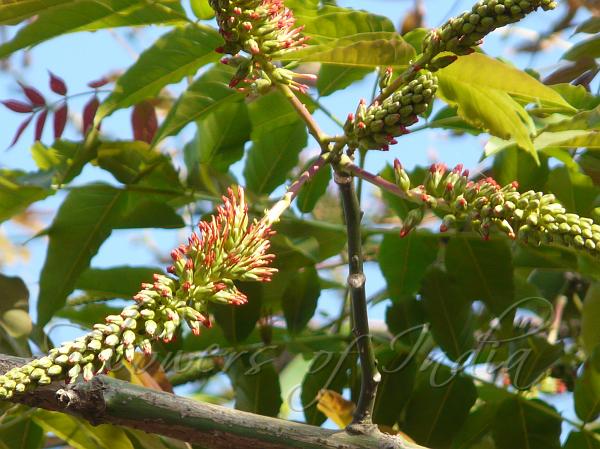|
| Pink Cedar |
|

|

| File size | 1540972 |
| Original date | 1/13/08 4:21 PM |
| Resolution | 2048 x 1536 |
| Flash | Flash did not fire, auto |
| Focal length | 82.8mm |
| Exposure time | 1/160s |
| Aperture | 4.2 |
| Focus Distance | |
| Metering Mode | Multi-segment |
| Camera make | Panasonic |
| Camera model | DMC-FZ18 |
| Sensor type | OneChipColorArea |
|
|
|
|
Photo: |
Botanical name: Acrocarpus fraxinifolius Family: Caesalpiniaceae (Gumohar family)
Synonyms: Acrocarpus combretiflorus, Acrocarpus grandis
Synonyms: Acrocarpus combretiflorus, Acrocarpus grandis
Pink Cedar is a fast-growing tree, which can reach
30-60 m in height. The straight trunk has spurs and the round crown is
composed of rising branches. The leaves are bipinnate, about 30 cm with 3-4
compound leaflets and consisting of 5-6 elliptical, lancelike leaflets 7-10
cm long and arranged in pairs. The leaves are bright red when young, giving
the tree its characteristic appearance. The wood of Pink Cedar is
hard and strong. Because it physically resembles ash and walnut woods, it
is used as a substitute for these two species. The wood is used in the
construction of houses and in the manufacture of furniture and packing cases.
In Africa the tree is planted to provide shade in coffee plantations. The
flowers are scarlet red and arranged in axillary racemes. Flowers appear on
tree when leafless, up to 20 dense heads hanging down from branch ends,
each 12 cm long, dripping nectar from the reddish-green to orange flowers.
Fruit is an elongated and flattened pod, narrowly winged, 10-18 seeded.
| Identification credit: Ajinkya Gadave | Photographed at Tableland, Panchgani, Maharashtra. |
• Is this flower misidentified? If yes,